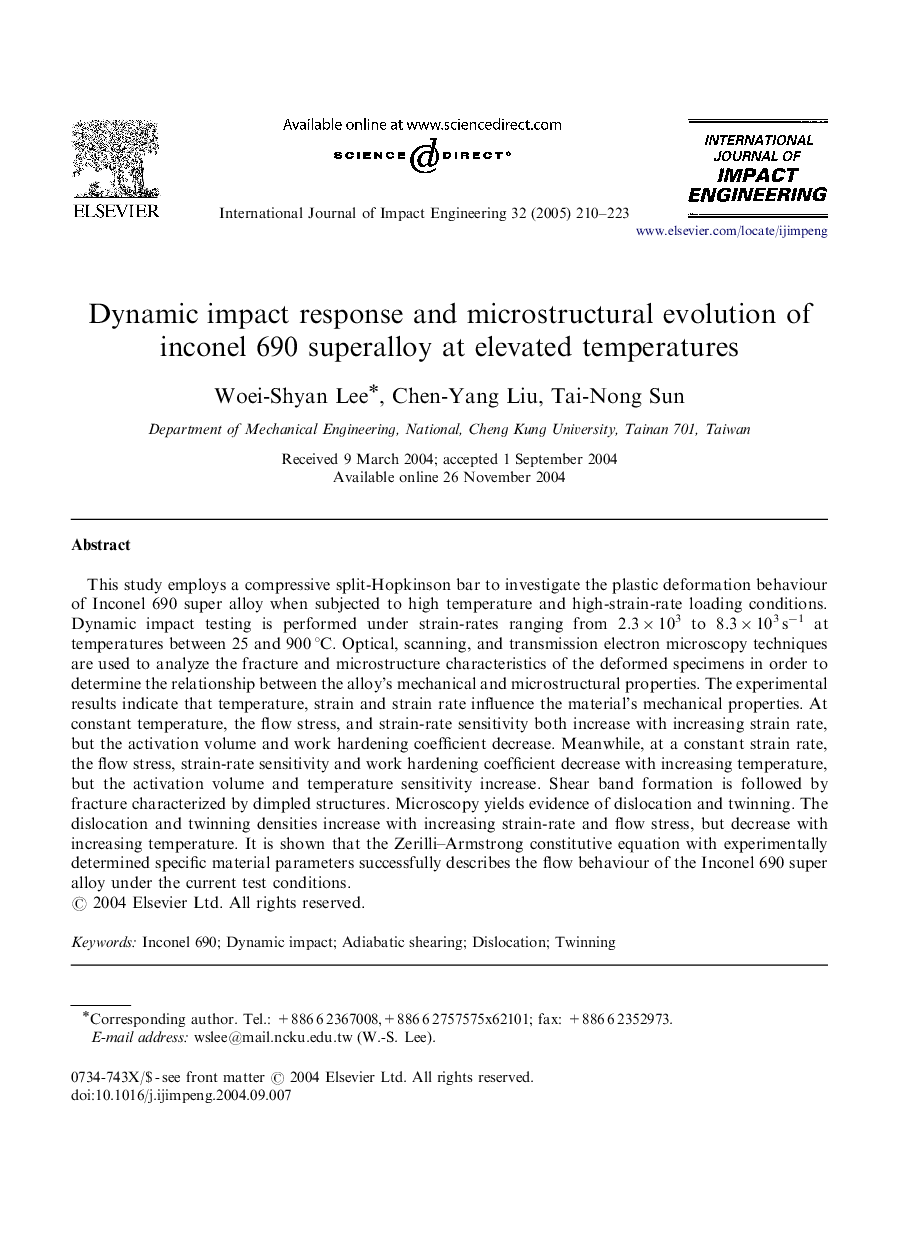| Article ID | Journal | Published Year | Pages | File Type |
|---|---|---|---|---|
| 9704651 | International Journal of Impact Engineering | 2005 | 14 Pages |
Abstract
This study employs a compressive split-Hopkinson bar to investigate the plastic deformation behaviour of Inconel 690 super alloy when subjected to high temperature and high-strain-rate loading conditions. Dynamic impact testing is performed under strain-rates ranging from 2.3Ã103 to 8.3Ã103 sâ1 at temperatures between 25 and 900 °C. Optical, scanning, and transmission electron microscopy techniques are used to analyze the fracture and microstructure characteristics of the deformed specimens in order to determine the relationship between the alloy's mechanical and microstructural properties. The experimental results indicate that temperature, strain and strain rate influence the material's mechanical properties. At constant temperature, the flow stress, and strain-rate sensitivity both increase with increasing strain rate, but the activation volume and work hardening coefficient decrease. Meanwhile, at a constant strain rate, the flow stress, strain-rate sensitivity and work hardening coefficient decrease with increasing temperature, but the activation volume and temperature sensitivity increase. Shear band formation is followed by fracture characterized by dimpled structures. Microscopy yields evidence of dislocation and twinning. The dislocation and twinning densities increase with increasing strain-rate and flow stress, but decrease with increasing temperature. It is shown that the Zerilli-Armstrong constitutive equation with experimentally determined specific material parameters successfully describes the flow behaviour of the Inconel 690 super alloy under the current test conditions.
Related Topics
Physical Sciences and Engineering
Engineering
Mechanical Engineering
Authors
Woei-Shyan Lee, Chen-Yang Liu, Tai-Nong Sun,
